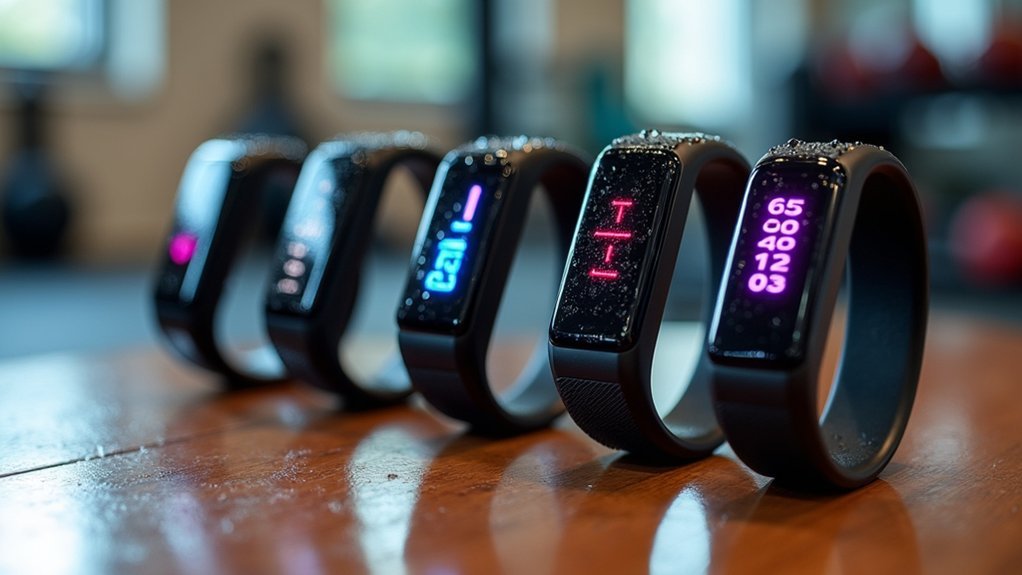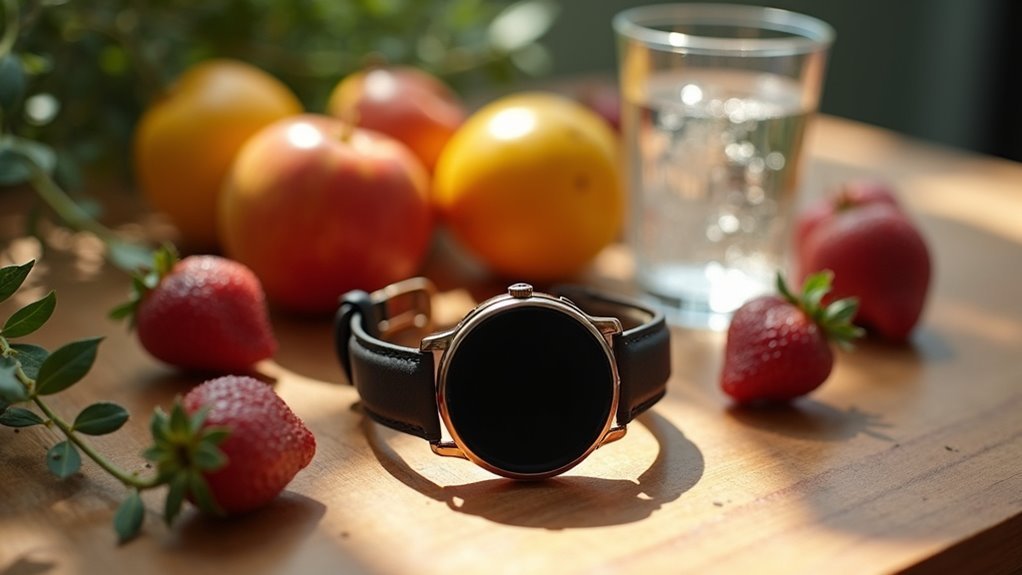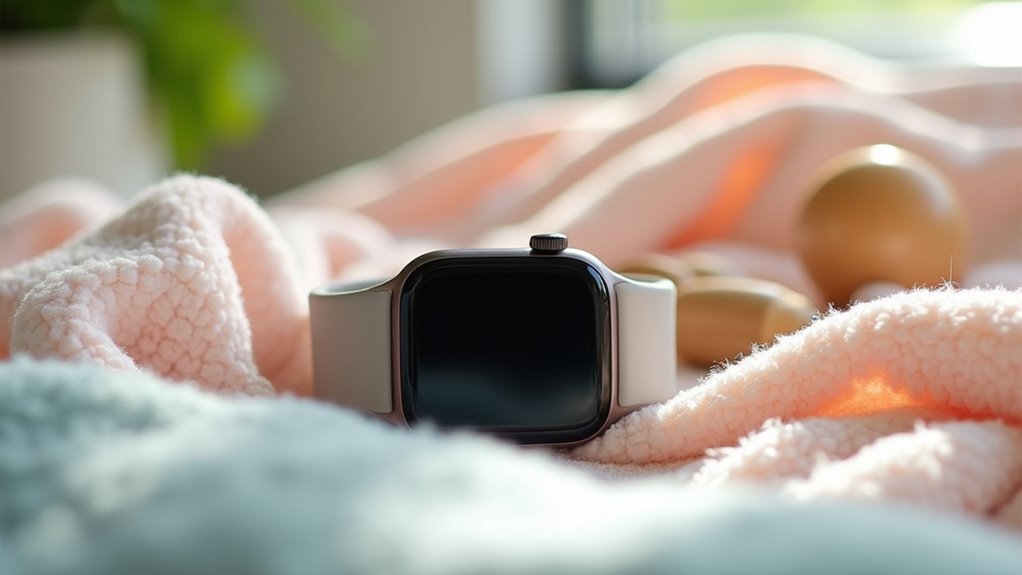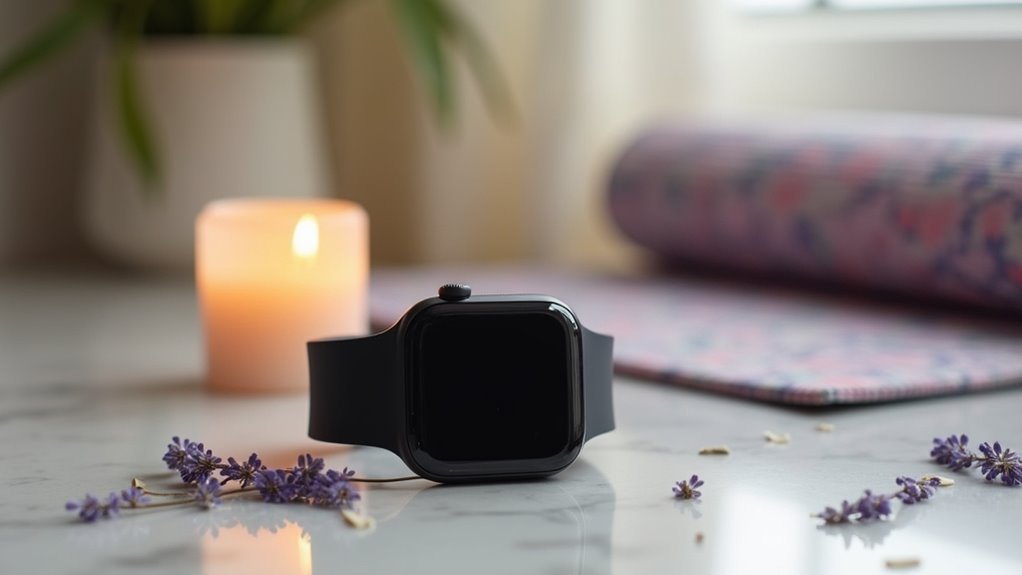You’ll find five standout sports hydration tracker categories that’ve been thoroughly tested: bioimpedance-based wearable monitors that send electrical currents through tissues, real-time sweat analysis patches using microfluidic channels to track electrolytes, multi-sensor smartwatches like Fitbit Charge 5 with personalized hydration algorithms, portable electrolyte measurement devices for instant sweat chemistry analysis, and advanced body water content analyzers using bioimpedance analysis for precise fluid distribution readings. Each technology offers unique advantages for optimizing your hydration strategy during training and competition.
Bioimpedance-Based Wearable Hydration Monitors
When you’re pushing through an intense workout or competing in endurance sports, bioimpedance-based wearable hydration monitors offer a cutting-edge solution for tracking your body’s fluid levels in real-time.
Bioimpedance technology delivers real-time hydration tracking for athletes pushing their limits in training and competition.
These devices work by sending small electrical currents through your tissues, measuring how resistance and reactance change as your hydration status shifts. You’ll find them designed as patches or bands that attach to your limbs or chest area.
What makes these monitors particularly valuable is their ability to detect severe dehydration reliably, giving you timely feedback on fluid loss during training. However, their accuracy can be influenced by factors like body composition, temperature, and activity levels, which may affect readings during intense exercise sessions.
Advanced models combine multiple sensors with machine learning algorithms to enhance accuracy. They’re noninvasive, cost-efficient, and perfect for continuous monitoring, helping you optimize performance while avoiding dehydration-related declines in cognitive and physical function.
Real-Time Sweat Analysis Smart Patches
Real-time sweat analysis smart patches represent the next frontier in sports hydration monitoring, using advanced microfluidic channels and flexible electronics to track your body’s biomarkers as you sweat.
These patches measure essential electrolytes like sodium and potassium to assess your hydration status, while detecting metabolites such as lactate and glucose provides insights into your metabolic activity during exercise.
You’ll get real-time data on sweat pH, cortisol levels for stress monitoring, and sweat rate changes that enable personalized hydration strategies.
Built with materials like graphene for high sensitivity, these textile-based sensors can simultaneously detect dozens of biomarkers.
Athletes benefit from optimized performance and dehydration prevention, though challenges remain in sensor accuracy and environmental durability for widespread commercial adoption. These devices also help assess worker exposure to toxins and hydration levels in occupational health settings.
Multi-Sensor Hydration Tracking Smartwatches
Multi-sensor hydration tracking smartwatches combine traditional fitness monitoring with sophisticated algorithms that estimate your fluid needs based on heart rate, activity levels, and environmental conditions.
The Fitbit Charge 5 excels with personalized hydration reminders and insights, while Garmin’s Vivosmart 4 adds Pulse Ox sensing to correlate blood oxygen with fluid requirements. These devices use heart rate, stress, and activity sensors to provide contextual hydration recommendations.
However, you’ll need to manually log water intake with most models like the Amazfit Active 2.
Unlike smart patches, smartwatches can’t directly measure sweat loss—they estimate and remind rather than precisely quantify. Premium devices utilize bioelectrical impedance analysis to measure the body’s resistance and correlate it with fluid content for more accurate hydration assessment.
The Bellabeat Leaf Urban integrates hydration into broader wellness tracking, though accuracy varies based on individual metabolic differences and user consistency with manual logging.
Portable Electrolyte Measurement Devices
Precision meets portability in electrolyte measurement devices that let you analyze sweat chemistry in real-time during training or competition.
These handheld units measure sodium, potassium, and other key electrolytes from tiny 0.05-0.3mL sweat or saliva samples, delivering results in seconds to minutes on digital LCD displays.
You’ll get immediate, actionable data to inform your personalized hydration strategy instead of guessing what your body needs.
Ion-selective electrodes paired with reference electrodes guarantee accuracy when calibrated with standard solutions ranging from 150-2000ppm NaCl.
Key advantages include:
- Real-time feedback – Remove guesswork from rehydration protocols with instant results
- Microvolume sampling – Analyze minimal fluid amounts without disrupting training
- Multiple formats – Choose between disposable strips or direct fluid application methods
Coaches, trainers, and sports medicine professionals use these devices to reduce dehydration risk and optimize athletic performance. Professional endorsements include partnerships with organizations like the Gold Coast Titans who rely on these systems as their official hydration testing supplier.
Advanced Body Water Content Analyzers
While traditional hydration assessment methods rely on external indicators, advanced body water content analyzers penetrate deeper into your physiology to measure actual fluid distribution throughout your tissues.
These sophisticated devices use bioimpedance analysis (BIA) to send electrical currents through your body, measuring resistance to estimate total body water content. You’ll get precise readings about intracellular and extracellular fluid levels that simple weight measurements can’t provide.
BIA technology measures electrical resistance through your body to precisely determine intracellular and extracellular fluid distribution beyond basic weight tracking.
However, you’re trading convenience for accuracy. These analyzers cost considerably more than basic hydration trackers and require proper calibration for reliable results.
Environmental factors can affect readings, so you’ll need consistent testing conditions. While they’re non-invasive compared to laboratory methods like neutron activation analysis, they’re still more complex than checking urine color or monitoring thirst sensations. Multiple BIA types are available, including multi-frequency BIA and segmental analysis options for different testing scenarios.
Frequently Asked Questions
How Much Should I Drink During Different Types of Workouts?
You should drink 4-6 ounces every 15 minutes during short workouts under 60 minutes. For longer sessions, increase to 7-10 ounces every 10-20 minutes using sports drinks for electrolyte replacement.
What Are the Early Warning Signs of Dehydration During Exercise?
Watch for dark yellow urine, increased thirst, and dry mouth as your first warning signs. You’ll also notice muscle cramps, fatigue, headaches, and dizziness when standing up during workouts.
How Does Altitude Affect My Hydration Needs During Training?
Altitude increases your hydration needs by up to 25% due to faster breathing and lower humidity. You’ll need 3-5 liters daily, as dehydration severely impacts performance more than at sea level.
Can I Rely on Thirst as an Indicator for Hydration Timing?
You can’t rely on thirst alone for hydration timing. Thirst lags behind your actual hydration needs, often not appearing until you’re already 2% dehydrated and experiencing performance impairments.
How Do Weather Conditions Impact My Daily Fluid Intake Requirements?
Cold weather reduces your thirst response by 40% while increasing fluid loss through respiration and cold diuresis. Hot weather above 80°F dramatically increases sweat losses, requiring you to drink more water proactively.





Leave a Reply